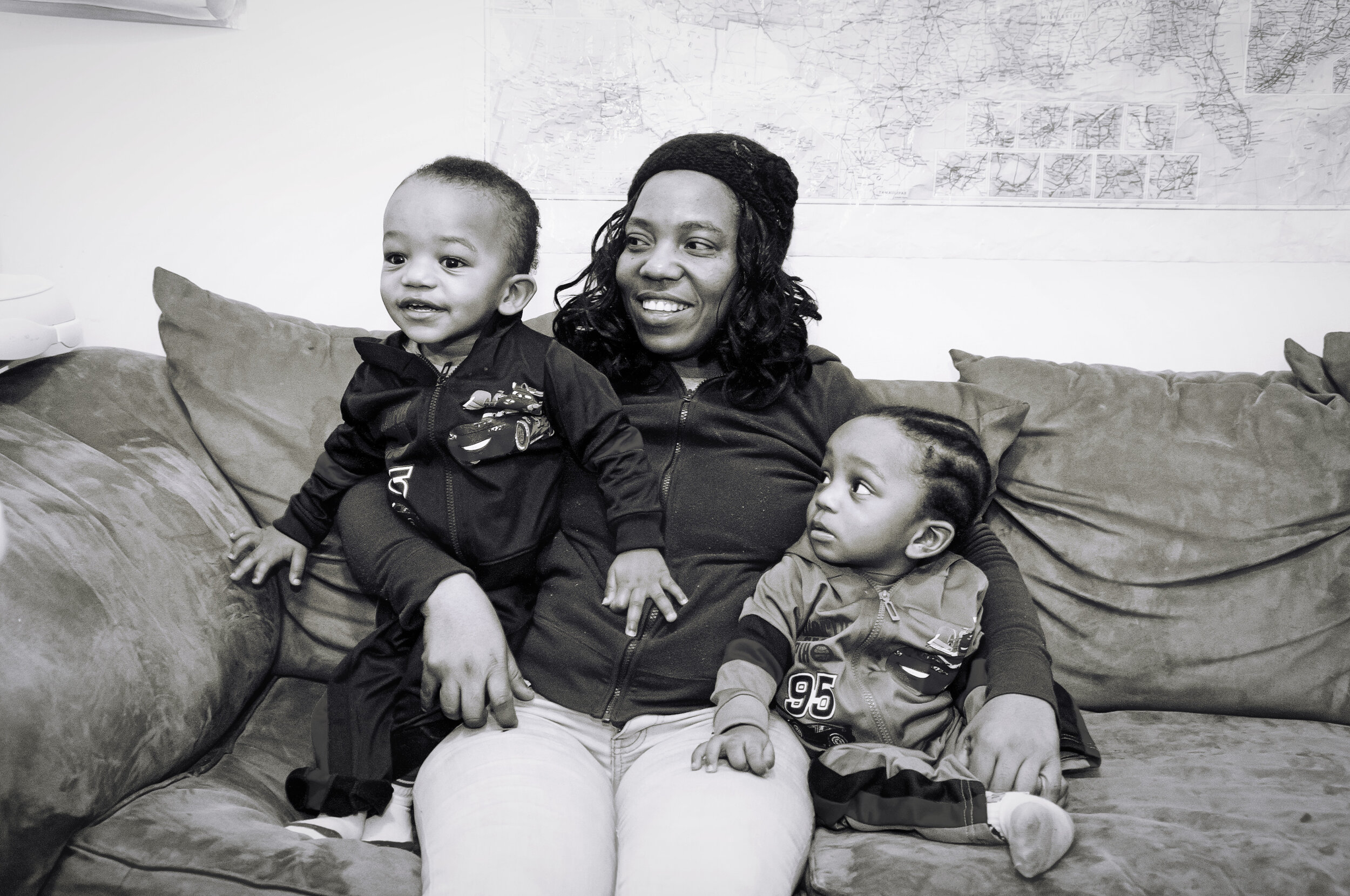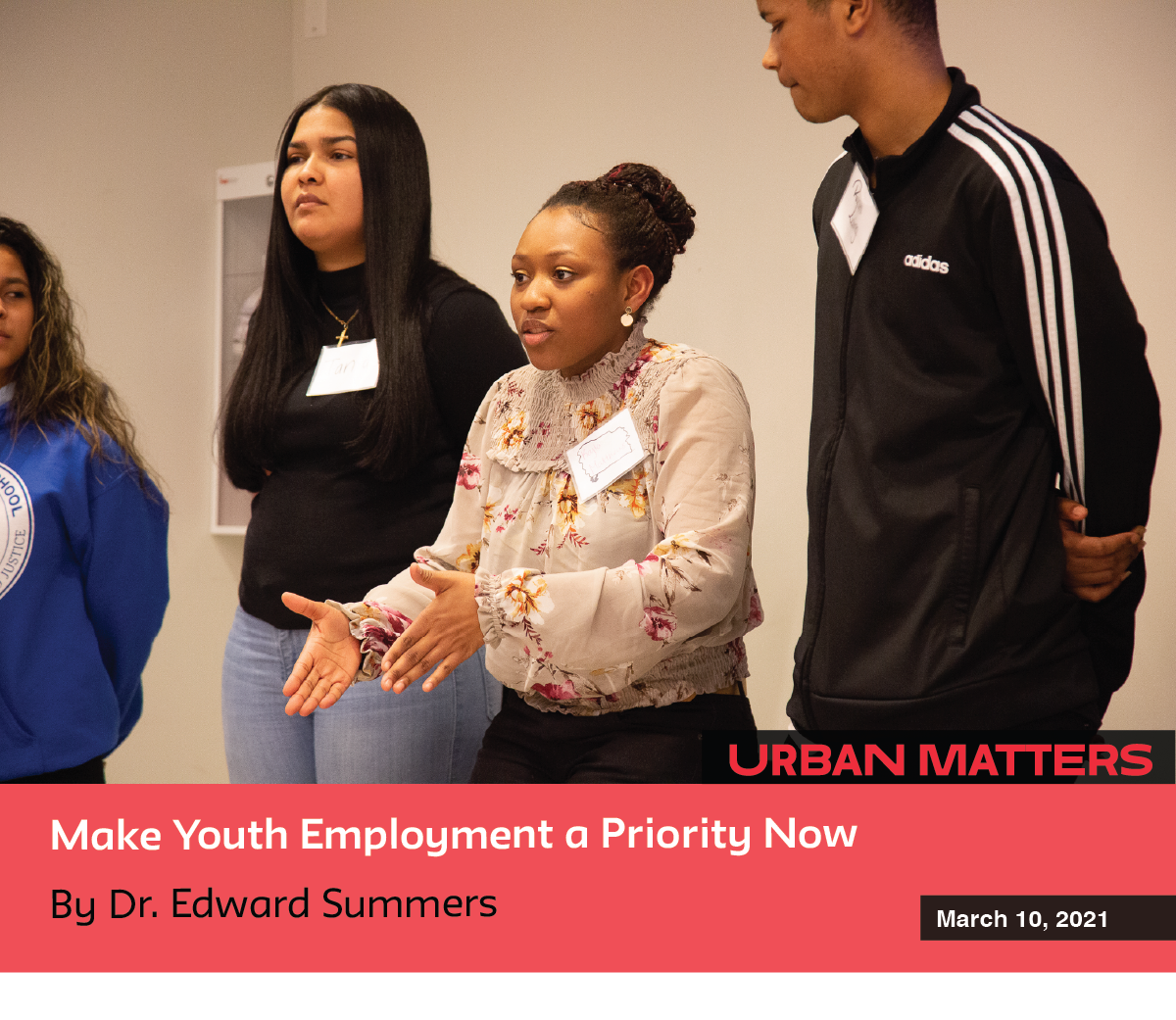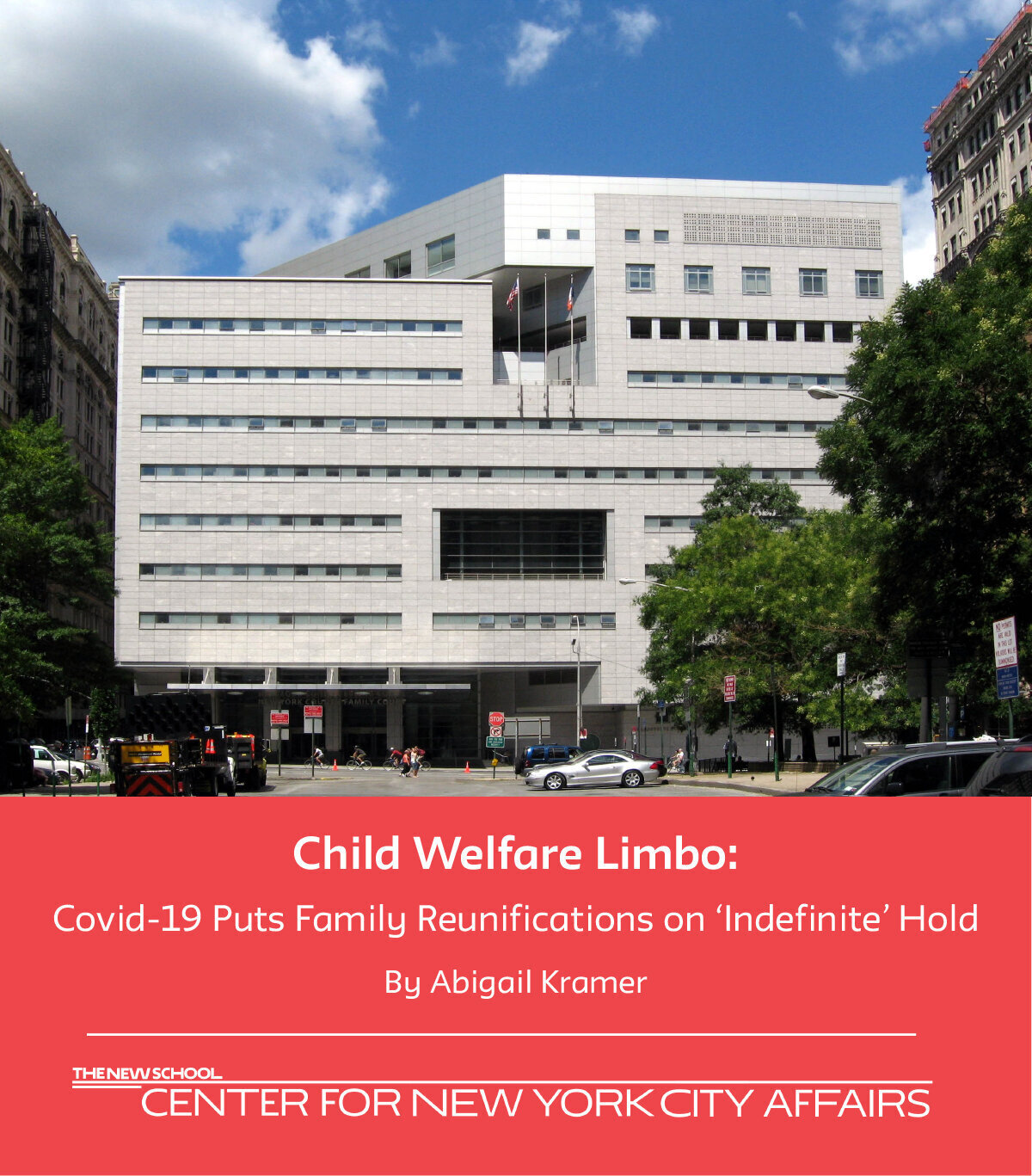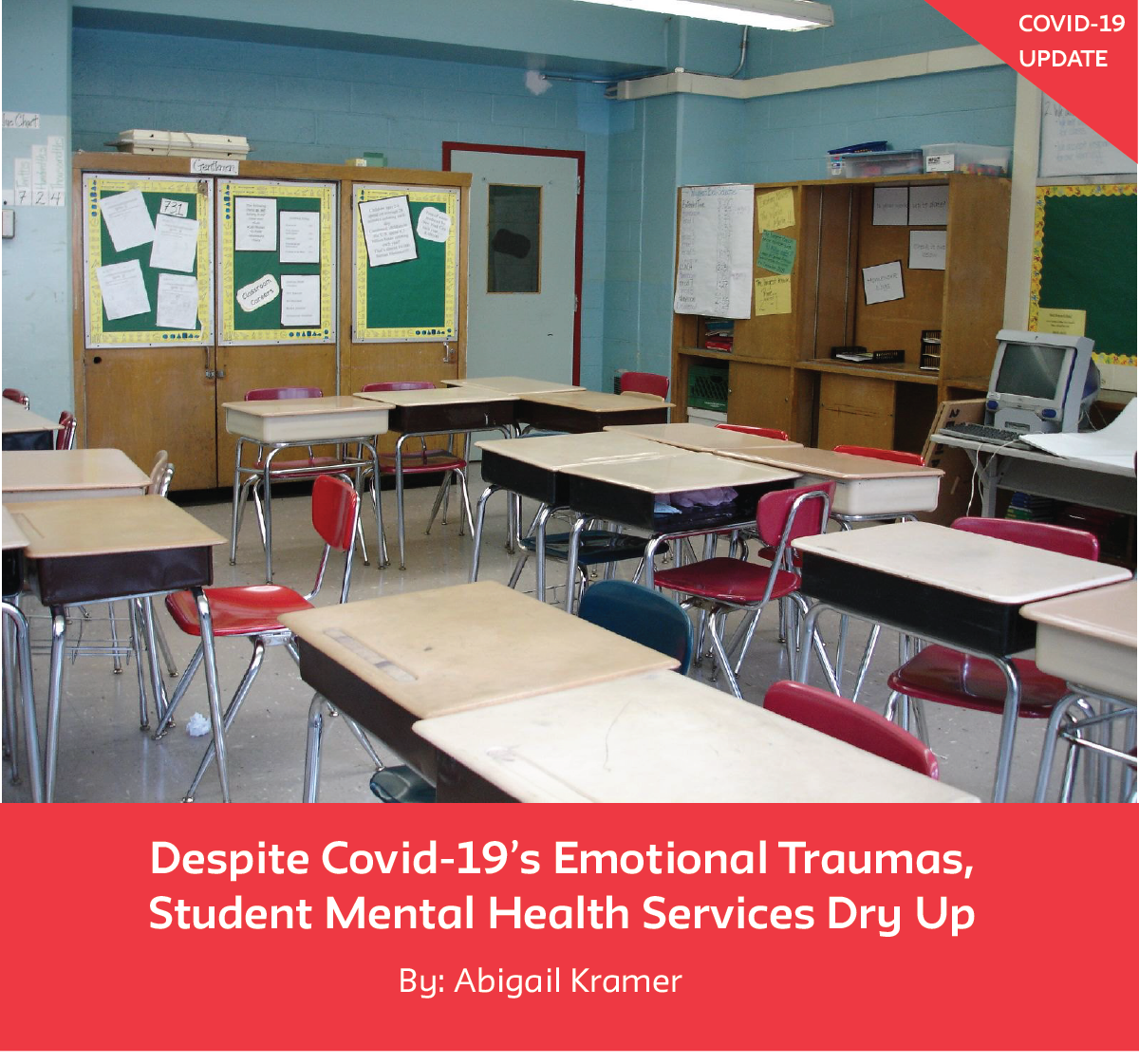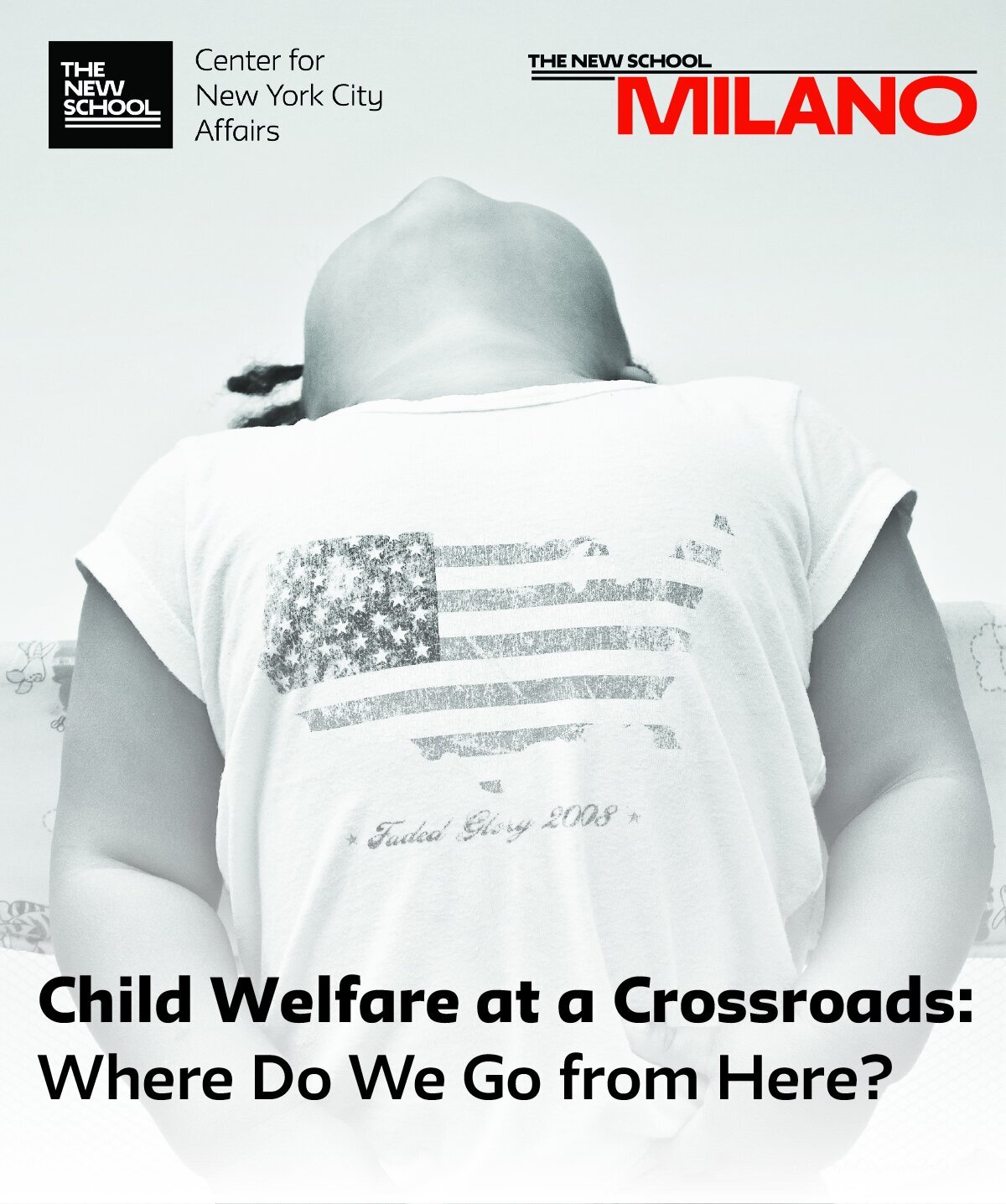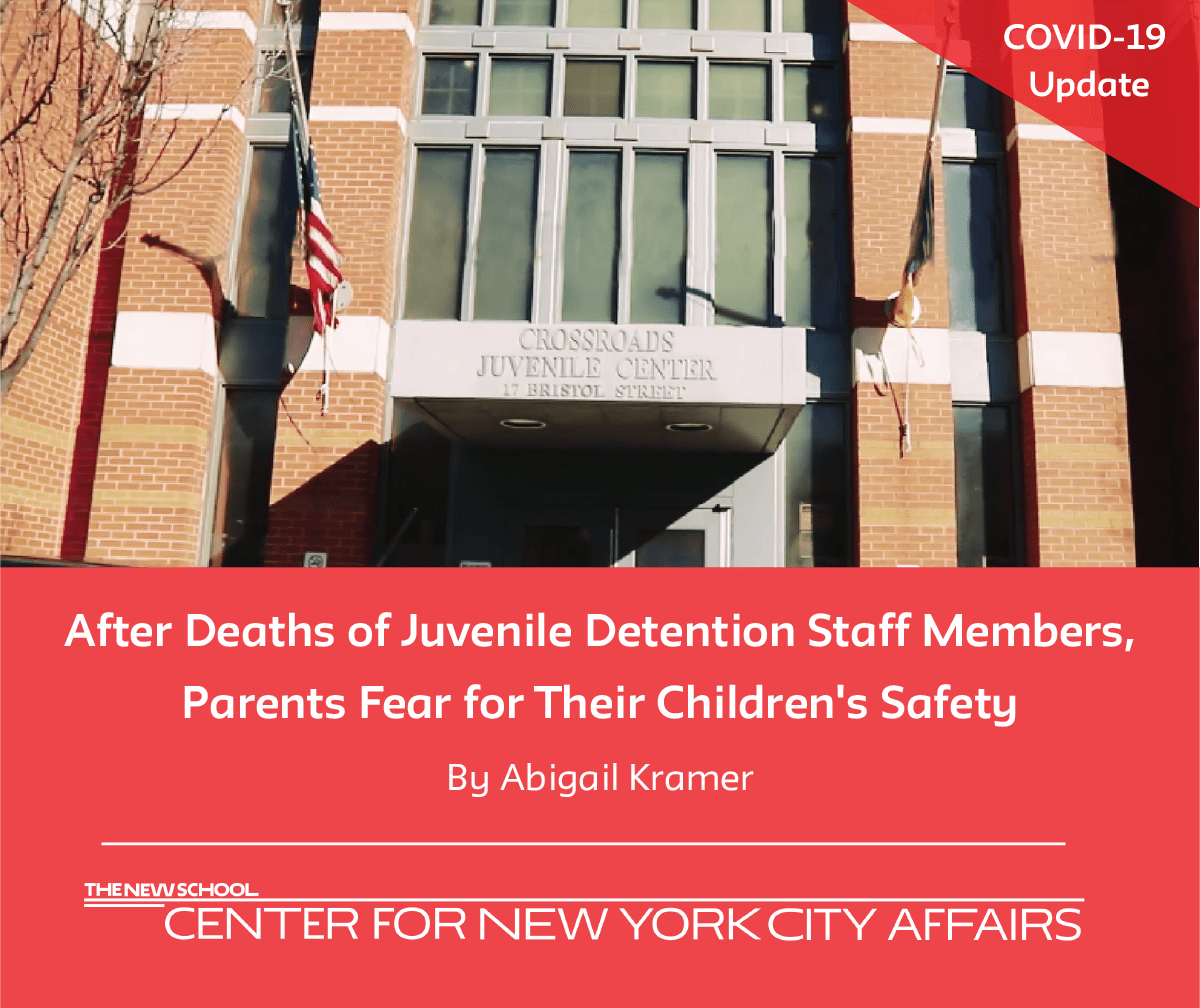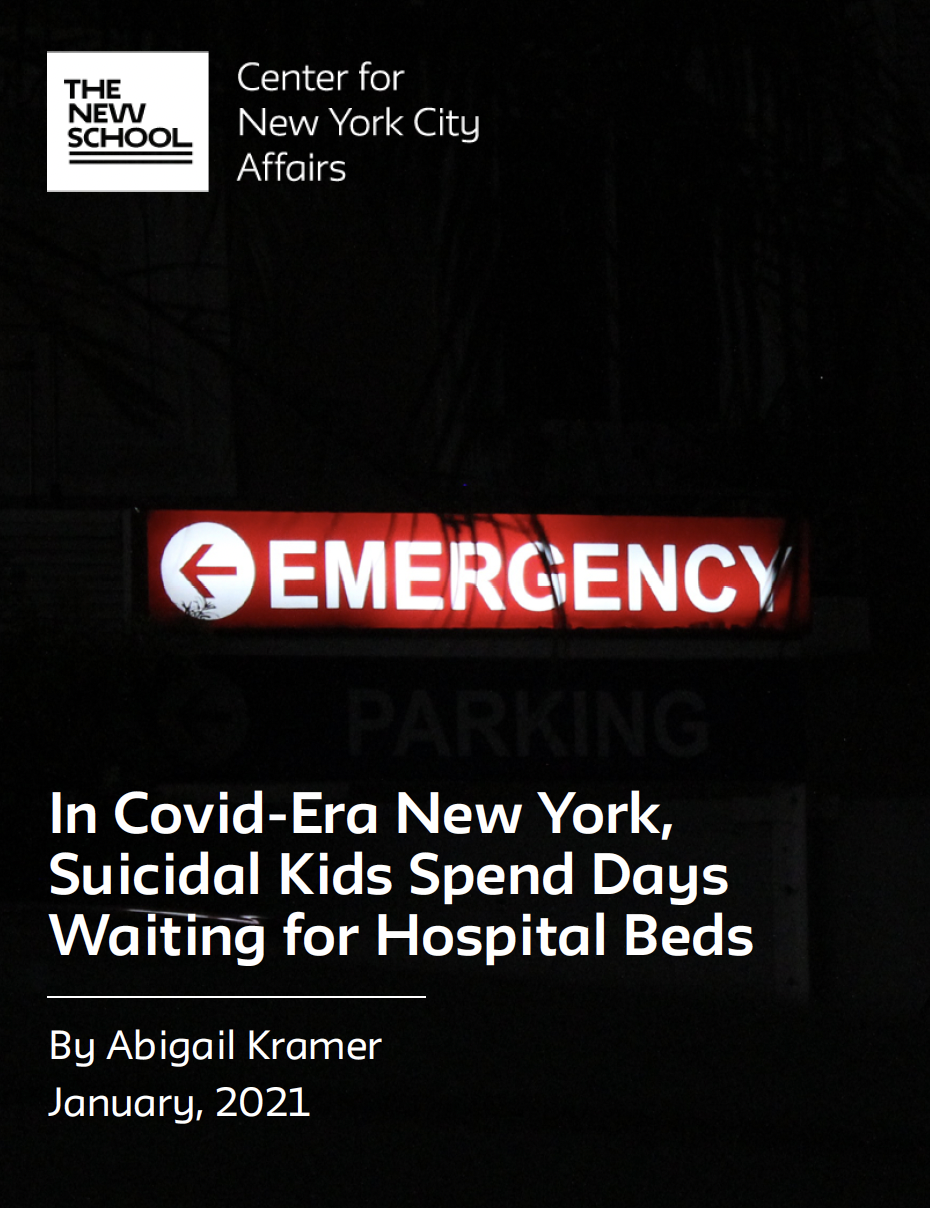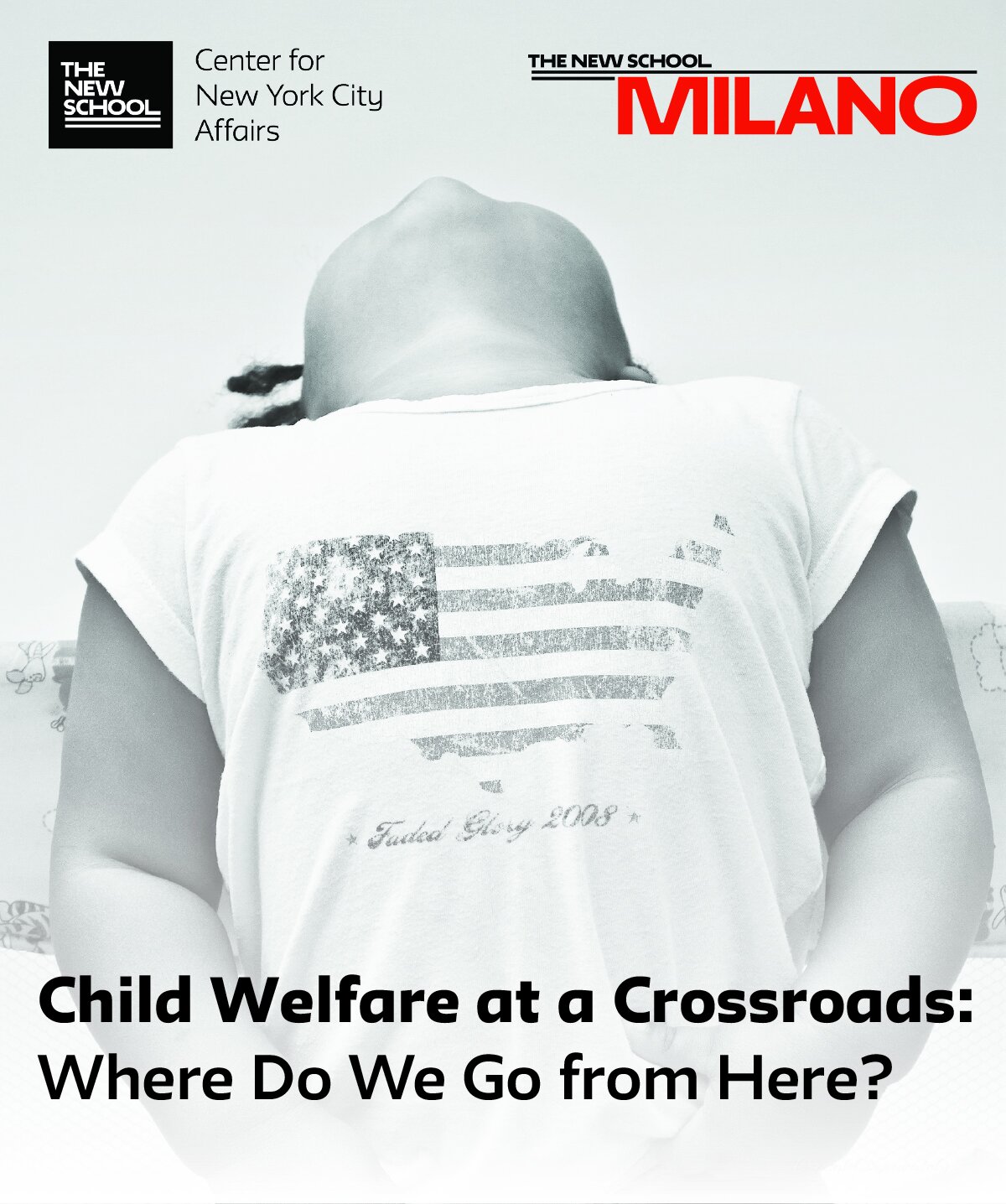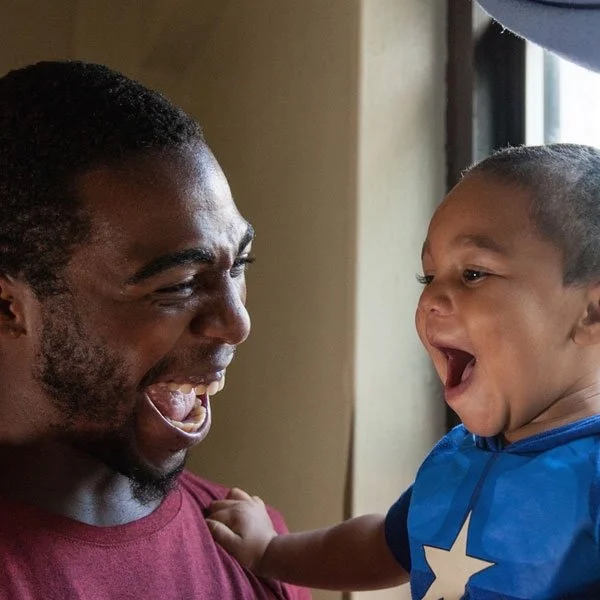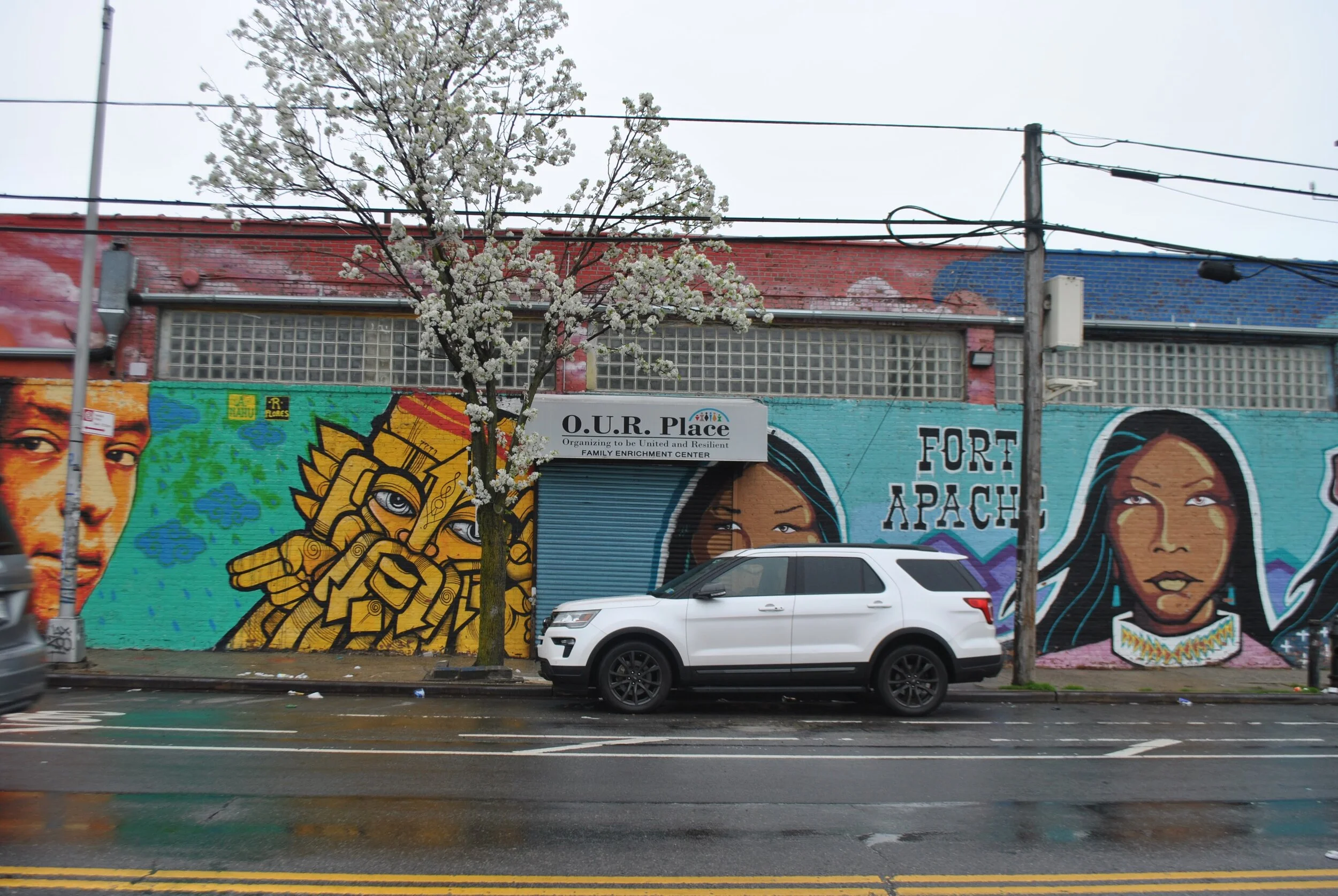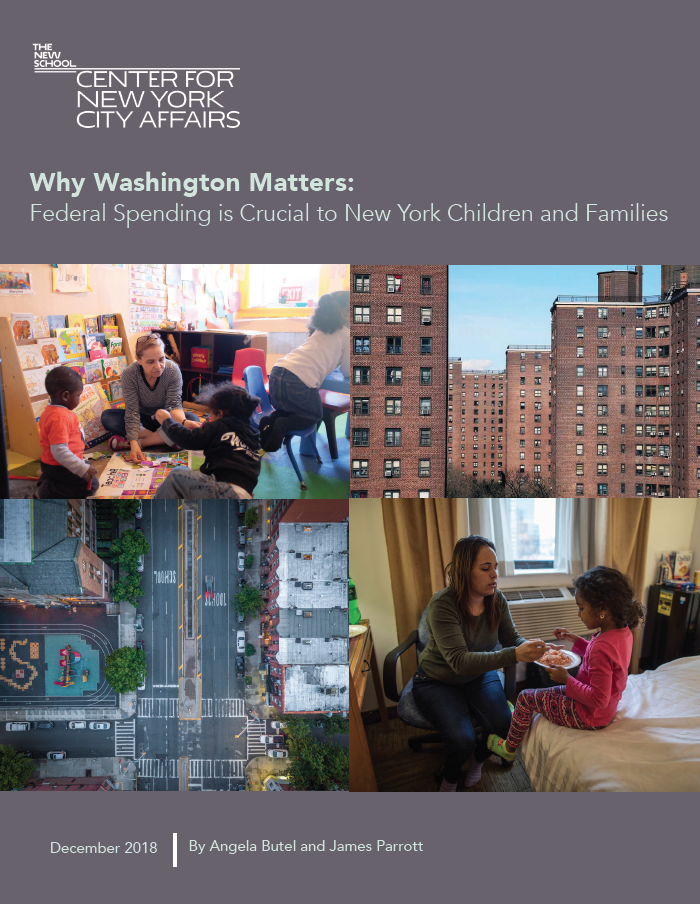For nearly twenty years, the Center’s Child Welfare Watch project has focused on vulnerable children, youth and families.
The Center tracks the economic and social wellbeing individuals and communities, examines the quality of public services, and offers constructive recommendations for reform.
We are particularly interested in how poverty intersects with low-wage work, homelessness, child welfare, and the justice system.
Urban Matters
Mental Health
Child Welfare Watch
Covid-19
Reports & Briefs
Urban Matters
Urban Matters
A System that Sets Families Up To Fail Badly Needs Reform
By Jim Purcell
The New York City Administration for Children’s Services (ACS) recently announced new contract awards to nonprofit agencies to provide preventive services to support families who have experienced challenges in caring for their children. The contracts were awarded through a rigorous request for proposals (RFP) process mandated by the City Charter and applicable laws. And therein lies a major problem.
DATA & STATISTICS | CHILD WELFARE WATCH
Watching the Numbers (2019)
A six-year statistical survey monitoring New York City's child welfare system
CLICK HERE FOR FULL SURVEY
Across New York State, children and adolescents wait weeks—or even months—to get treatment for serious mental health problems. In the coming year, mental health providers and advocates warn that the situation may get worse. Despite an increase in teen suicide attempts, State officials plan to cut payments for several mental health programs that serve young people in their homes and communities.
The programs, which rolled out at the beginning of 2019, were supposed to serve over 200,000 young people on the State’s Medicaid program with mental health or substance abuse problems. A year after their launch, however, services are reaching a tiny fraction of the kids who need them.
Urban Matters
The Path to Salary Parity in Early Childhood Education
By Mai Miksic
Decades of research have demonstrated the importance of early education, especially for children from economically and historically disadvantaged backgrounds. Researchers have also cautioned that the financial returns on investments in early childhood are contingent on the quality of programming. High-quality early childhood education programs require high-quality teachers. By July this year, EarlyLearn, the City’s subsidized early childhood education program, will be merged with Pre-K for All under the City Department of Education, creating a birth-to-high-school continuum of education that includes a truly unified early childhood system. That system should include pay parity for all qualified teachers.
DATA & STATISTICS | CHILD WELFARE WATCH
Watching the Numbers (2018)
A six-year statistical survey monitoring New York City's child welfare system
CLICK HERE FOR FULL SURVEY
brief
Banned For 28 Years: How Child Welfare Accusations Keep Women Out Of The Workforce
By Abigail Kramer
Francine Almash was not especially surprised when an investigator from New York City’s child welfare agency showed up at her door. A few months earlier, her then-10-year-old son, Shawn, who is autistic, had been pinned to a wall by a crisis counselor in his special education classroom and come home with a broken thumb. Almash refused to send him back, and so the school called the State’s child abuse hotline to report her for neglecting Shawn’s education.
New Report
Why Washington Matters: Federal Spending Is Crucial To New York Children And Families
By Angela Butel and James Parrott
The federal government provides significant funding to localities, including New York City, which is targeted primarily to support children, families, and low-income communities. This support happens through a combination of direct benefits for individuals and families – social safety net programs such as Medicare, Social Security, Medicaid, and the Supplemental Nutrition Assistance Program (SNAP) – and social services categorical funding, which flows through the City budget to help provide services to individuals and families. Some federal funding streams, such as Temporary Assistance to Needy Families (TANF), provide both kinds of funding – direct benefits to families as well as programmatic funding to states and localities.
REPORT
Free Preschool, Coming To An Apartment Near You: What Family Child Care Could Mean For 3K
By kendra Hurley with Angela Butel
When New York City Mayor Bill de Blasio ran for re-election in 2017 on the ambitious promise of offering free preschool to the city’s 3-year-olds, classes in living rooms were most likely not what he or voters had in mind. But last month, just over a year into 3K’s multi-year rollout, the City Department of Education (DOE) revealed its intention to bring 3K into the more loosely regulated world of home-based child care settings.
Urban Matters
Making Family Child Care Work For 3K
By Kendra Hurley
Mayor Bill de Blasio campaigned for re-election in 2017 on a promise of instituting “3K-for-All” – a logical extension of the popular citywide launch of universal pre-kindergarten (UPK) for 4-year-olds during his first term. At the time, neither he nor the voters may have envisioned parents dropping their 3-year-olds off for preschool at private homes and apartments. But 3K home-based daycares are now part of the City’s plan for the fall of 2020, according to a white paper on early childhood education released by the Department of Education (DOE) last week.
Data & Statistics | Child Welfare Watch
Watching the Numbers (2017)
Our six years of key indicators spotlight trends in New York City’s foster care and preventive services systems.
Urban Matters
The City Shares Its New Early Childhood Education Vision
By Kendra Hurley
On Monday, the Department of Education (DOE) released its long-anticipated white paper on the future of early education in New York City. It describes how the City envisions its merger of the City-contracted subsidized child care system, now overseen by the Administration for Children’s Services, with Pre-K-for-All and 3K-for-All under the aegis of the DOE.
NEW BRIEF
Long Hours, High Caseloads: An Ongoing Surge of Cases Weighs on Child Welfare Workers
By Abigail Kramer
In the poorest neighborhoods of New York City, frontline child welfare workers frequently carry caseloads far above recommended levels. As part of a larger package of reforms, the Administration for Children’s Services (ACS) has taken several steps to bring caseloads down, including hiring hundreds of new caseworkers and offering more opportunities for ongoing training. But caseworkers in the agency's busiest offices say they're struggling--and the chaos spills onto the families they were hired to help.
Child Welfare Surge Continues: Family Court Cases, Emergency Child Removals Remain Up
By Abigail Kramer
More than a year and a half after a pair of widely publicized child deaths, New York City's child welfare agency continues to investigate a dramatically higher number of families than in recent years, according to data published by the Administration for Children's Services (ACS).
Child Welfare Needs to Have Its ‘Stop-and-Frisk Moment’
By Michelle Burrell
I have believed for a long time that child welfare needs its own “stop-and-frisk moment.”
Though stop-and-frisk was a police tactic for decades, during the waning years of Mayor Michael Bloomberg’s tenure at New York City Hall it underwent a public image shift. Whereas before many talked about it as a useful tool for preventing crime, it became framed as a discriminatory tactic that unfairly targets Black and Latino men.
NEW BRIEF | CHILDREN, YOUTH & FAMILIES | BUDGET WATCH | REPORTS
By The Numbers: Five Trends Re-shaping New York's Changing World of Child Care
Recent years have brought a series of rapid changes to New York City’s subsidized early education system. There was the massive EarlyLearn reform of 2012, pre-K expansion in 2014, and now the Department of Education's rollout of preschool for 3-year-olds as it prepares to take over responsibility for all City-contracted child care services. In this shifting landscape, trends in enrollment can provide a window into how parents and providers are experiencing the changes. Using point-in-time data obtained by CNYCA, we have identified five key enrollment trends in New York City’s subsidized child care system.
CHILDREN, YOUTH & FAMILIES | REPORTS
Building Health Homes for Kids: New York’s Reforms for Children on Medicaid Finally Take Shape
By Abigail Kramer
New York has begun its ambitious project to re-engineer health care for low-income children. In a new report, Building Health Homes for Kids: New York’s Reforms for Children on Medicaid Finally Take Shape, the Center for New York City Affairs looks at the opportunities and challenges presented by the State’s first major step toward reform.
CHILDREN, YOUTH & FAMILIES | URBAN MATTERS
Child Welfare and the Intended Consequences of the War on Drugs
By Aarin Michele Williams
In order to properly understand the child welfare system we must grasp its connections to race, class, drugs, and reproduction. Many recognize that our nation’s shameful mass incarceration rates are fueled by our long carceral history and the infamous “war on drugs” with its intentional targeting of Black and Brown communities and impoverished people. We know the statistics, read the books, watch the documentaries. However, we think less about the ways this “war” pollutes the systems -- medical, educational, social, and child welfare -- we have been convinced to believe exist for our, or others,’ protection.
NEWS BRIEF | CHILDREN, YOUTH & FAMILIES | URBAN MATTERS
When Teenagers Go Hungry, They Face Impossible Choices
By Susan Popkin
Teenagers are hungry – all the time. That’s universally true, even in the most secure, economically well-off families.
NEW REPORT | CHILDREN, YOUTH & FAMILIES | REPORTS
Small Children, Big Opportunities
The Department of Education Will Soon Take Charge of Child Care for Babies and Toddlers. What Can They Do to Build Capacity and Improve Quality?
The last in a series of briefs looking at child care for babies and toddlers in New York City's subsidized early education centers, this report presents our key findings. It also provides recommendations for building the centers’ capacity to provide quality infant and toddler care. With the City preparing to move its subsidized child care system from its current home at the Administration for Children’s Services to the City’s Department of Education, our advisory board of early education stakeholders, argues that now is the time to dream big when it comes to babies and toddlers, and to build a rich continuum of early education from infancy onward that will prevent the need for more costly interventions down the line.
NEWS BRIEF | CHILDREN, YOUTH & FAMILIES | BUDGET WATCH
By James A. Parrott, PhD
This piece is part of an ongoing project to examine how budget cuts may affect children and families in New York.
New Report | Children, Youth & Families | Reports
Making Room For Babies?: Lessons For the Field
By Kendra Hurley
Many child care centers have seen their enrollment of 4-year-olds decline due to New York City's pre-K expansion, which has dramatically grown the number of early education options available to kids this age. In response, some centers have become interested in “aging down” to serve younger children. This would be a tremendous boon in New York City, where quality affordable and subsidized infant and toddler care is in high demand and short supply. However, "aging down" is difficult for child care centers. Serving infants and toddlers is more expensive than serving older children and preparing a center to take infants requires a significant investment upfront. This report looks at ways that affordable and subsidized centers who do provide infant care make it work.
NEW BRIEF | CHILDREN, YOUTH & FAMILIES | BUDGET WATCH | REPORTS
Is Cuomo Ditching Kids in His Medicaid Reform Plan?
By Abigail Kramer
Even as Governor Andrew Cuomo promises to defend New Yorkers’ health care from federal funding cuts, his proposed budget threatens to kill a long-planned fix to the state’s underfunded, overburdened system of mental health services for children.
EVENTS
Future of New York City's Health + Hospitals
On November 15, 2017, The Center for New York City Affairs at The New School and the New York State Nurses Association jointly sponsored a forum on critical issues surrounding the public hospitals of NYC: The Future of New York City's Health + Hospitals Corporation--Preserving and Expanding Access to Care for All New Yorkers.
The forum featured leaders from New York City's hospital and healthcare community. There was a brief presentation by the authors of the new report, "On Restructuring the NYC Health + Hospitals Corporation," by Barbara Caress and James Parrott.
Speakers include: James Knickman, former President of the NYS Health Foundation; Lilliam Barrios-Paoli, former Deputy Mayor and former board chair NYC H+H; Andrea Cohen, NYC H+H Vice President; Jill Furillo, NYSNA President, Jeff Kraut, Northwell Health, Exec. VP.
NEW REPORT | Child Welfare Watch
Keeping Teenagers out of Foster Care: Do Teen-Specialized Services Make a Difference?
By Abigail Kramer
In 2013, New York City launched an array of programs designed to keep teenagers out of the City’s foster care system.
The programs—known collectively as “teen-specialized preventive services”—represent a pivotal piece of the City’s ongoing child welfare reform agenda: to keep whittling down the number of kids who enter foster care by providing intensive, evidence-based therapy to families in crisis.
Brief | Budget Watch
Congress Needlessly Putting Children's Health at Risk
By Abigail Kramer
A crisis in children’s health insurance may be coming to New York State.
State officials could start sending termination letters to families on its Child Health Plus insurance program as soon as early December—a development that was first reported by Politico, and which would put New York in the company of nearly a dozen other states around the country.
Brief | Children, Youth, and Families
New York's Tale of Two Child Care Cities
By Kendra Hurley
Growing interest in early education has led to more infant classrooms in child care centers—but they’re mostly for wealthy families.
What's Needed for '3-K for All' and Child Care Centers to Work and Play Well Together?
By Kendra Hurley
IN LATE APRIL Mayor Bill de Blasio announced two new plans that could determine the future of the country’s largest child care system for poor and low-income families.
Will the new plans further disrupt a child care system still reeling from challenges that arose from pre-K expansion, including a roughly 20 percent decline in enrollment of 4-year-olds since the expansion? Or might they, present a key opportunity for the DOE to identify and address those challenges?
Brief | Child Welfare
ACS in Overdrive: Since the Death of a Harlem 6-Year-Old, are Fewer Families Getting the Help They Need?
After a series of widely publicized child deaths in 2016, New York City's child welfare system continues to struggle under a glut of new cases.
In response to a surge in child abuse and neglect reports, the Administration for Children’s Services (ACS) has drastically increased the number of families it brings into the system, filing more cases in Family Court and placing more children in foster care.
Caseloads among the workers responsible for investigating and monitoring families are significantly up. Family Court is overwhelmed, exacerbating its chronic problems of delayed and cancelled hearings. And lawyers for ACS-involved parents say that families are sitting on waitlists—sometimes for weeks—for preventive service programs designed to help stabilize and supervise kids' safety at home.
Report | Child Welfare
Adrift in NYC: Family Homelessness and the Struggle to Stay Together
As family homelessness in New York City continues to climb and the City fights to open 90 new shelters, a new report by the Center for New York City Affairs at the New School offers insight into how family shelters are missing opportunities to avert a hidden but common catastrophe of homelessness: families breaking apart.
The report, “Adrift in NYC: Family Homelessness and the Struggle to Stay Together,” sheds light on the academic research showing that homelessness and family breakup go hand in hand. Partners separate from partners. Children separate from parents – both through informal arrangements with friends and relatives as well as through mandated foster care placements. And what begins as a temporary arrangement often proves lasting. Family members who do stay together often do so against a relentless backdrop of fear that, having lost their homes, they will next lose one another.
How Children Pay the Price for Over-incarceration
By Leila Morsy and Richard Rothstein
As many as one in 10 African American students has an incarcerated parent. One in four has a parent who is or has been incarcerated. The discriminatory incarceration of African American parents is an important cause of their children’s lowered performance, especially in schools where the trauma of parental incarceration is concentrated.
'These Are People’s Lives and It Scares Me Every Day’
A Child Protective Caseworker Talks about Her Work
Recent deaths of children in families investigated by New York City child welfare services have put frontline child protective workers under intense scrutiny; last week, the City’s Department of Investigation released a report calling for improved protective services training and staffing at ACS.
Urban Matters | Mental Health
Reform or Relapse? Kids’ Medicaid Mental Health Services Hang in the Balance
By Abigail Kramer
After five years of planning and negotiation, the State’s departments of health, mental health, and substance abuse had come up with a plan to overhaul their outdated, overburdened system of mental health services for low-income kids.
Data & Statistics | Child Welfare
Watching the Numbers (2016)
A six-year statistical survey monitoring New York City's child welfare system
CLICK HERE FOR FULL SURVEY
Why Child Protective Investigations Can Make Parents Fearful and Put Kids at Risk (2016)
By Jeanette Vega
In many big cities the number of children entering foster care has dropped dramatically while the number of families receiving support services has grown. But across the country, just as many families continue to be the subject of child protective investigations; across the country, more than three million children are the subjects of such investigations each year.
READ MORE
How 'Growing Up NYC' Aims to Improve the Lives of Children (2016)
By Richard Buery
New York City is home to almost three million children, youth, and young adults under the age of 24. The City is committed to helping each of those young people thrive at each stage of their childhood and grow up to become healthy and happy adults. To help us get there, the City’s Children’s Cabinet has launched Growing Up NYC: a unified vision for promoting the well-being of children and young adults.
READ MORE
Dollars and Sense: Greater Economic Security for Family Caregivers
By The National Academies of Sciences, Engineering, and Medicine
At least 17.7 million Americans are family caregivers of someone age 65 or older – unpaid work that, with the rapid “graying of America,” has become increasingly commonplace. While many caregivers find deep personal satisfaction in such work, they also experience higher levels of anxiety and stress, resulting from the physical, emotional, and economic burdens caregiving puts on their own lives.
READ MORE
Urban Matters | Children, Youth, and Families, Homelessness
'We Moved So Many Times I Didn't Think It Was Strange' (2016)
By Hoa K. Vu
Roughly one out of eight New York City public school students has been homeless sometime during the past five years, according to a recent estimate by the Institute for Children, Poverty, and Homelessness. With family homelessness remaining at record levels, tens of thousands of children are growing up in shelters. In her own words, one tells her story.
READ MORE
Report | Child Welfare, Young Children
Bringing It All Home: Problems and Possibilities Facing NYC's Family Child Care (2016)
By Kendra Hurley with Janie Ziye Shen
In 2012, NYC launched one of the country's largest experiments in raising the quality of subsidized family child care. More than three years since the launch of EarlyLearnNYC, we investigated what has worked and what has not.
READ | DOWNLOAD
Report | Child Welfare
Is Reform Finally Coming to New York City Family Court? (2016)
By Abigail Kramer
While delay and dysfunction plague Family Court child protective cases, a combination of factors has opened a window for reform.
Report | Child Welfare, Child Care
Introducing the Baby & Toddler Takeoff (2015)
By Kendra Hurley, Abigail Kramer and Bruce Cory with Evan Pellegrino and Gail Robinson
With nearly 15 million new dollars earmarked in the 2016 city budget for the social and emotional health of the youngest New Yorkers, the city's growing interest in what's often called "infant mental health" is undeniable. This report offers the first comprehensive look at New York's key new goals and efforts to protect the well-being of babies and toddlers.
READ | DOWNLOAD
Report | Child Welfare, Homelessness, Mental Health
In Need of Shelter: Protecting the city’s youngest children from the traumas of homelessness (2015)
By Kendra Hurley and Abigail Kramer
This Child Welfare Watch report describes the stresses that homelessness puts on families with young children, and explores the discontinuity between the large number of young children in the shelter system and the dearth of services available to them.
READ | DOWNLOAD
BIG DREAMS FOR NEW YORK CITY'S YOUNGEST CHILDREN:
THE FUTURE OF EARLY CARE AND EDUCATION
In October 2012, New York City launched EarlyLearnNYC, a plan that would upend its system for providing subsidized child care to working class and low-income families. The goal was to take the city’s sprawling assortment of child care programs—ranging from subsidized babysitting services to nationally accredited preschools—and blend them into a unified, holistic spectrum of early education services for children from 6 weeks through 4 years old.

